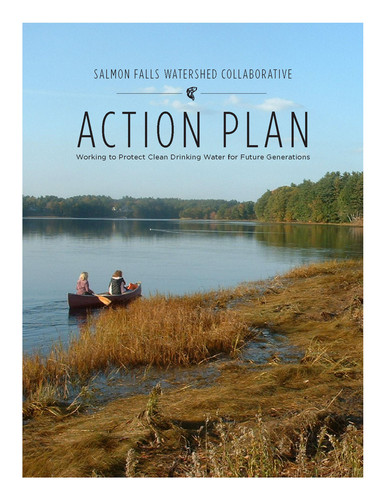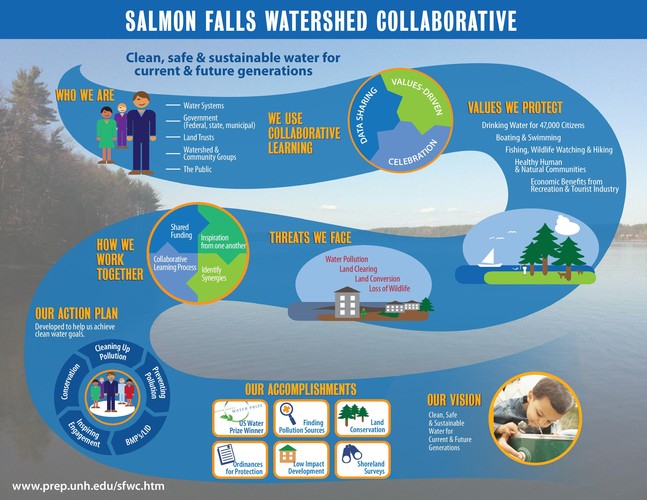The Wrack
The Wrack is the Wells Reserve blog, our collective logbook on the web.
The Wrack is the Wells Reserve blog, our collective logbook on the web.
The Piscataqua Region Estuaries Partnership convened the Salmon Falls Watershed Collaborative to improve watershed planning and management — and to protect water supply sources — in the Salmon Falls River watershed.
 The Salmon Falls River flows from an ecologically diverse land area shared by the states of Maine and New Hampshire, and drains into the Great Bay estuary, a coastal ecosystem of national importance. Approximately 28,000 people rely on public water systems in the Salmon Falls watershed to provide clean drinking water. Many other households rely on private groundwater wells within this region to provide clean drinking water. While the watershed is a critical drinking water source it is also threatened by future increases in polluted runoff resulting from population growth and the associated conversion of forested land to developed areas. The U.S Forest Service 2009 report Private Forests, Public Benefits identified the rivers in the Piscataqua Region as the most threatened in the nation with regard to a potential decline in water quality due to conversion of private forested lands to housing.
The Salmon Falls River flows from an ecologically diverse land area shared by the states of Maine and New Hampshire, and drains into the Great Bay estuary, a coastal ecosystem of national importance. Approximately 28,000 people rely on public water systems in the Salmon Falls watershed to provide clean drinking water. Many other households rely on private groundwater wells within this region to provide clean drinking water. While the watershed is a critical drinking water source it is also threatened by future increases in polluted runoff resulting from population growth and the associated conversion of forested land to developed areas. The U.S Forest Service 2009 report Private Forests, Public Benefits identified the rivers in the Piscataqua Region as the most threatened in the nation with regard to a potential decline in water quality due to conversion of private forested lands to housing.
The collaborative coordinates long-term source water protection efforts among planning commissions, land trusts, watershed associations, water systems, and town, state, and federal agencies in New Hampshire and Maine. The collaborative's goal is to protect and sustain high quality drinking water in the Salmon Falls River watershed.

In February 2012 The Salmon Falls Watershed Collaborative was awarded the US Water prize (read more here). The Salmon Falls Watershed Collaborative hosted the one-day Working Beyond Borders to Protect Drinking Water in the Salmon Falls Watershed workshop on October 27, 2010. The workshop built a sense of shared purpose among participants in the Salmon Falls Watershed. Organizations included more than 80 participants from Maine and New Hampshire state agencies, water systems, local governments (select boards, planning boards, conservation commissions, and town staff), watershed groups, lake associations, land trusts, regional planning commissions, and other conservation organizations. The workshop led to an action plan that reflects the priorities and ideas generated from the workshop and complements existing water protection work being done by water districts, municipalities, and many different organizations in the watershed. As part of the overall project, several low-cost, high-priority actions will be implemented.
Project Partners
In addition to PREP and the Wells Reserve, the following groups are currently active participants in the Collaborative’s Steering Committee: